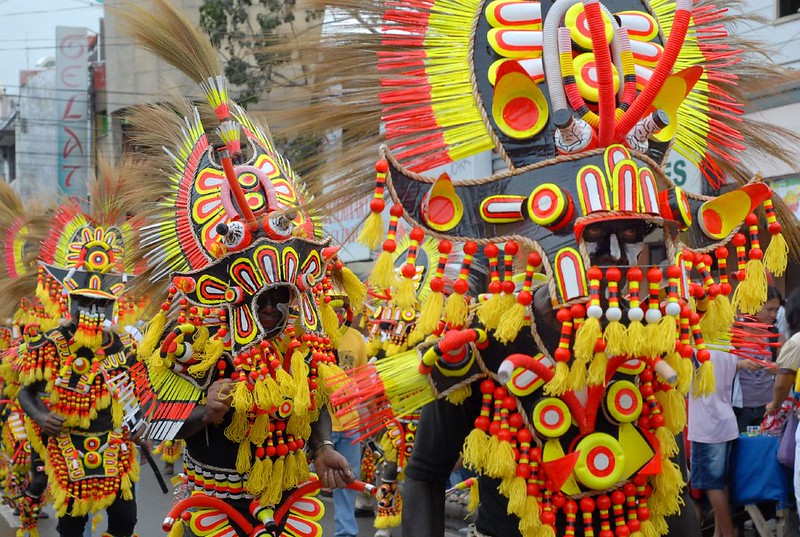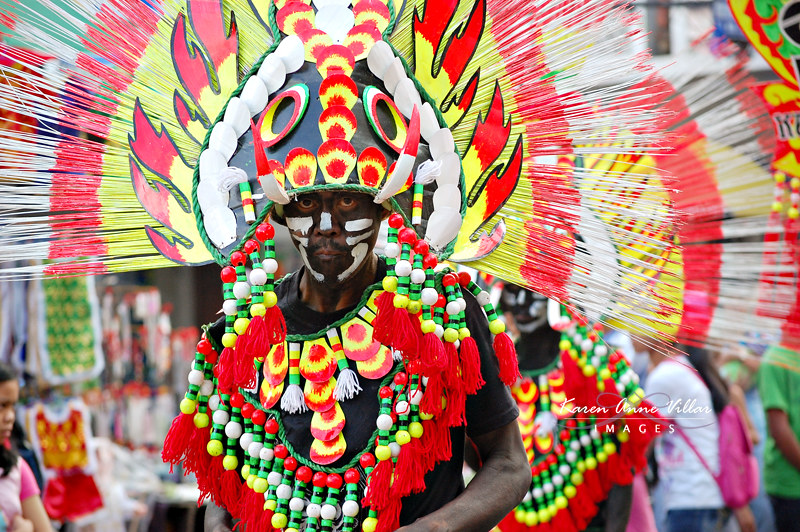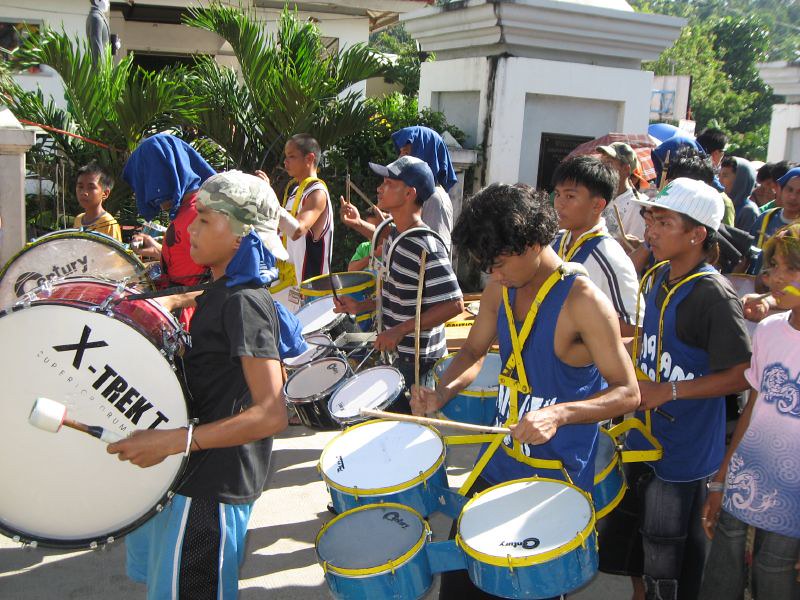Ati-Atihan
A Carnival of Dance and Drums Echoing with History and Faith
2026/01/10 - 2026/01/18
Every January, the city of Kalibo on Panay Island bursts into color, rhythm, and excitement for the Ati-Atihan Festival. For a whole week, locals and visitors paint their faces black, wear vibrant costumes, and dance through the streets to the beat of drums. This festival, blending devotion to the Santo Niño (Holy Child) and respect for the indigenous Ati people, is a “living tradition” where both spectators and participants become one in the celebration.
Held every third week of January, Ati-Atihan attracts tens of thousands of participants and spectators. Whether you are a devotee, a family, or a traveler, anyone can be the star of this uniquely Filipino festival—a fusion of religion, indigenous culture, and wild street parties.
Main Attractions
Street Dance & Tribal Parade
The heart of Ati-Atihan is the street dance, where tribal groups called “tribu” parade through the streets. Inspired by the Ati people, participants wear grass skirts, feathered headdresses, and paint their faces and bodies with soot or charcoal. Hundreds of drums and gongs ring out, while shouts of “Hala Bira! Viva Señor Santo Niño!” fill the air, creating a whirlpool of excitement that draws even the audience into the dance.
Key Events
During the festival, there are Sadsad (street dance contest), the religious procession of the Santo Niño image, the “Higante” giant puppet parade, nightly concerts, the Aklan Day civic parade, and the “Mutya it Kalibo” beauty pageant. On the final day, a solemn mass is held at Kalibo Cathedral, followed by a grand procession and a last round of energetic dancing.
Costumes and Decorations
Handmade, creative costumes are a hallmark—grass skirts, shell necklaces, colorful beads, and feathered capes. Many participants paint their faces and bodies black as a sign of respect for the Ati. Streets are decorated with streamers, palm leaves, and banners, while the scent of incense and the feel of confetti heighten the festive spirit.
Cultural and Historical Background
The history of Ati-Atihan dates back to the 13th century. According to legend, ten Malay chieftains (datus) from Borneo landed on Panay Island and negotiated with the local Ati chieftain, Marikudo. In exchange for land, they offered gold, jewelry, and textiles, leading to peaceful coexistence. To express gratitude, the new settlers painted their faces and bodies black and celebrated with the Ati people, imitating their dances and music.
This legendary encounter and friendship form the roots of Ati-Atihan. In the 16th century, with the arrival of the Spanish and the spread of Christianity, Catholic elements were added and the festival merged with devotion to the Santo Niño. Today’s Ati-Atihan is a “living festival” where indigenous culture, history, and Catholic faith are intertwined, expressing the identity, gratitude, and faith of the people of Kalibo.
More than just a tourist event, this festival strengthens local pride and bonds, and is a “living tradition” passed down through generations. In Kalibo homes, preparations, dancing, and costume-making bring together families, friends, and the community, while visitors are warmly welcomed. Ati-Atihan is a festival that connects past and present, faith and culture, local and global—truly representing the spirit of the Philippines.
Participant Voices
I saw photos online and decided to join from Australia. I was invited by a local group to share grilled fish, sticky rice, and coconut water. By night, I was dancing barefoot with strangers who felt like old friends.
Fun Facts
- Ati-Atihan is called “The Mother of All Philippine Festivals” and is the origin of other famous festivals like Sinulog and Dinagyang.
- “Hala Bira!” is a rallying cry meaning “Go for it!”
- Anyone—local or tourist—can join the street dancing, making it one of the Philippines’ most participatory festivals.
Festival Dates
The Ati-Atihan Festival is held every January in Kalibo, Aklan, Panay Island, Philippines.
The event schedule is subject to change. Please check the official website for the most up-to-date information.
Information
| Name | Ati-Atihan |
| Country | Philippines |
| Area | Kalibo |
| Date | 2026/01/10 - 2026/01/18 |
| Link |
Upcoming Festivals
Dia de la Virgen de Guadalupe Mexico
A Festival Weaving Faith, Fervor, and Mexican Identity
2025/12/11L'Escalade Switzerland
Geneva’s Grand Winter Festival of Courage, Chocolate, and Community
2025/12/12Umkhosi Wokweshwama South Africa
The Zulu First Fruits Festival—A Sacred Celebration of Land, Ancestors, and Renewal
2025/12/12Lucia Festival (St. Lucia's Day) Sweden
A Festival of Light Illuminating the Nordic Darkness
2025/12/15Las Posadas Mexico
The Luminous Quest for Sacred Shelter
2025/12/22Noche de Rabanos (Night of the Radishes) Mexico
A celebration blending art, farming heritage, and cultural traditions
2025/12/23Chant of the Sybil on Majorca Spain
A Medieval Prophecy Echoes Through Majorcan Christmas
2025/12/23‘Hatajo de Negritos’ and the ‘Hatajo de Pallitas’ Peru
A Christmas Festival of Rhythm, Faith, and Afro-Andean Heritage in Peru’s Ica Region
2025/12/24Harbin International Ice and Snow Sculpture Festival China
A Frozen Wonderland Where Art and Adventure Merge
2025/12/24Takanakuy Peru
The Andean Festival of Reconciliation by Fist—How Confrontation Creates Year-End Peace and Bonds


